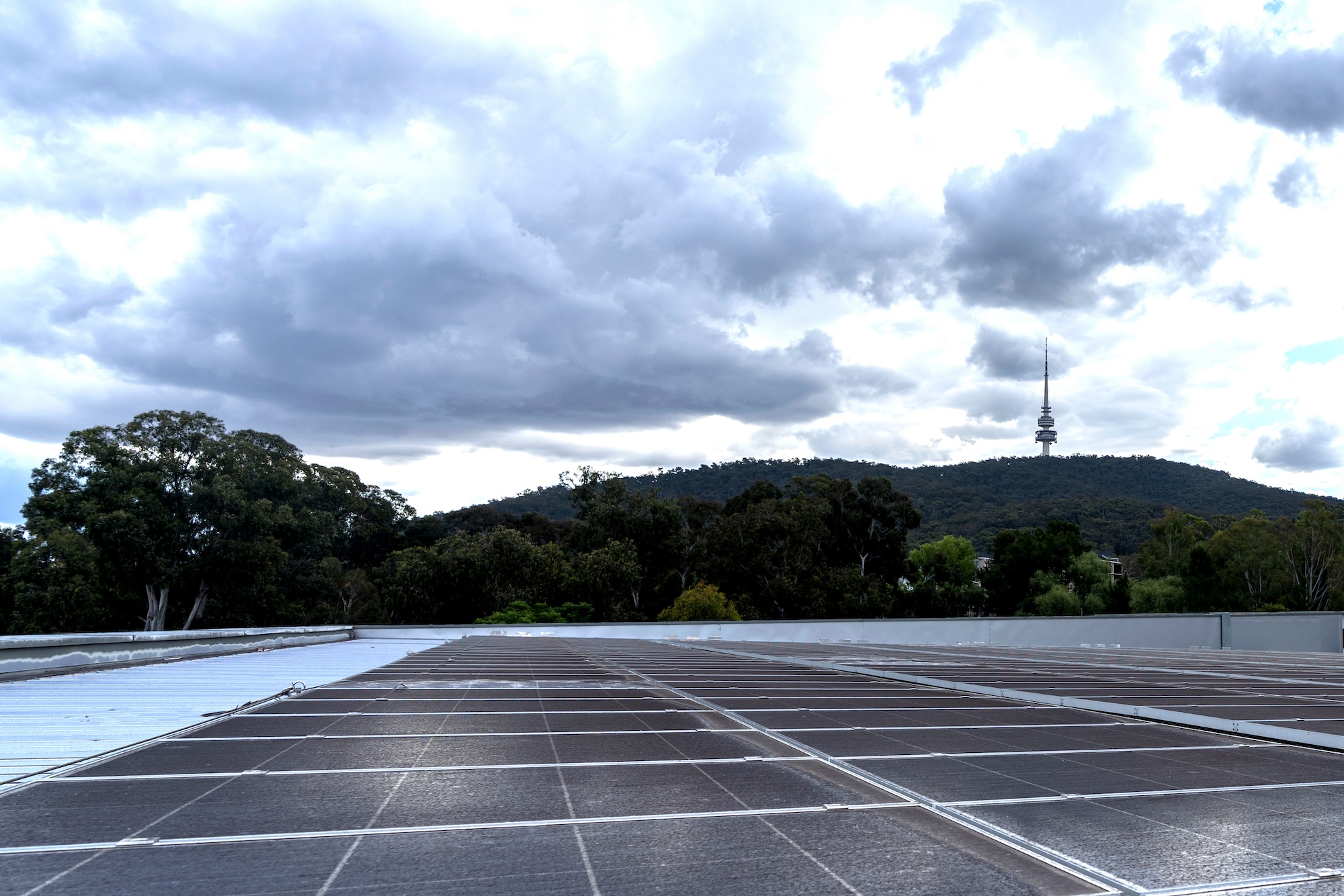
Published on
It's easy being green
Canberra is a sustainability leader in Australia. And as if that’s not already impressive enough, the national capital was recently ranked as the most sustainable city in the world! i
While we try to be modest about it, we’re pretty proud of how this city has embraced a more renewable approach, including its green energy usage, sustainable systems for public transport and low pollution index.Overview
- Canberra, in the Australian Capital Territory, is the most sustainable city in Australia.
- The city's electricity is from 100 per cent renewable sources, putting it far ahead of the pack.
- Known as the 'bush capital', this city has plenty of green spaces surrounding its lakes, rivers and suburbs.
Green transport
Amazingly, nearly 89 per cent of Canberra’s public transport is green. ii Its well-structured bus and light rail transport system and extensive network of bike paths make it easy to move around the city without relying on a car.
In addition to using public transport, Canberrans often make the most of the two e-scooter schemes. This makes up to 1,900 colourful scooters (and helmets) available across the city, giving locals and visitors a quick and easy alternative to walking, cycling or driving.
To cars in Canberra: the ACT Government is committed to making zero-emission vehicles (ZEVs) available to all Canberrans in an effort to meet its target by 2030 that 80 to 90 per cent of light vehicles purchased will be ZEVs. iii In 2022, the government-funded over 70 publicly accessible electric vehicle charging stations across the city. Also, all newly leased government cars are ZEVs while the existing fleet is being assessed for replacement by zero-emission vehicles.

Transport Canberra electric busses moving Canberrans.
Green campus
At ANU, sustainability is more than a buzzword, it’s embedded in how we operate, teach, research and engage. Our campus is full of trees and green spaces, but we’re just as proud of the work happening behind the scenes to cut emissions and reduce waste.
Through ANU Green, we’re driving climate action, circular economy solutions and nature-positive initiatives across campus, from electrifying buildings to running behaviour change programs like Be Bin Smart and Carbon Smart Travel.
By 2040, ANU is aiming to reduce campus emissions to below zero. It’s a bold ambition, and it’s backed by action through energy upgrades, sustainable transport, waste minimisation and research-led decision-making.
Green curriculum
At ANU, students don’t just learn about sustainability, they help shape it. Around 45% of our programs include environmental sustainability content, encouraging students from all disciplines to think critically about environmental outcomes, no matter their degree.
There are also hands-on ways to get involved. You could contribute to campus initiatives, take on a sustainability-focused internship, develop an action plan for a low-carbon event, or make your residential hall more climate-smart.

Sustainable food access at the ANU Co-Op
Green energy
In 2019, Canberra became the first city in Australia to be powered by 100 per cent renewable energy. iv The city relies on solar and wind farms to produce its electricity, making it green and clean. This was an essential step towards meeting the ambitious target of zero net emissions by 2045. v
The ACT Government is also working in partnership with industry, education and research to push for further innovation and development to meet this target. This collaboration results in a range of programs, including rolling out home battery storage for rooftop solar panels, smart energy grids and electric vehicle incentives and trials.
Green space and clean air
One of the reasons Canberra ranks as the world’s most sustainable city vi in a report by UK comparison company Uswitch is thanks to its very low pollution index.
As well as clean air, Canberrans enjoy large amounts of public green space, which makes the city easy on the eye and helps keep pollution low, contributing to the national capital's overall sustainability success score.
Overall, Canberra’s commitment to a sustainable future is outstanding. ANU is proud to play an important role in supporting and contributing to its ongoing success as a sustainability leader.

Canberra sustainable initiatives engage everyone.
Interested in a green future? Explore environment and sustainability research expertise at ANU and the undergraduate and postgraduate degree programs we offer in the natural, physical and environmental sciences .
i Uswitch, The world’s most sustainable, 14 May 2021, https://www.uswitch.com/gas-electricity/most-sustainable-cities/
ii Canberra Weekly, Canberra revealed as world’s most sustainable city, 18 May 2021, https://canberraweekly.com.au/canberra-revealed-as-most-sustainable-city-in-the-world/
iii ACT Government, National leading action to drive zero emissions vehicle uptake in the ACT, 20 July 2022, https://www.cmtedd.act.gov.au/open_government/inform/act_government_media_releases/barr/2022/nation-leading-action-to-drive-zero-emissions-vehicle-uptake-in-the-act
iv Canberra Times, Canberra named world’s most sustainable city, 18 May 2021, https://www.canberratimes.com.au/story/7257624/canberra-named-worlds-most-sustainable-city/
v CBR Canberra, Renewable Energy, date not specified https://canberra.com.au/business/why-canberra/sector-profiles/renewable-energy/
vi Uswitch, The world’s most sustainable cities, 14 May 2021 https://www.uswitch.com/gas-electricity/most-sustainable-cities/

